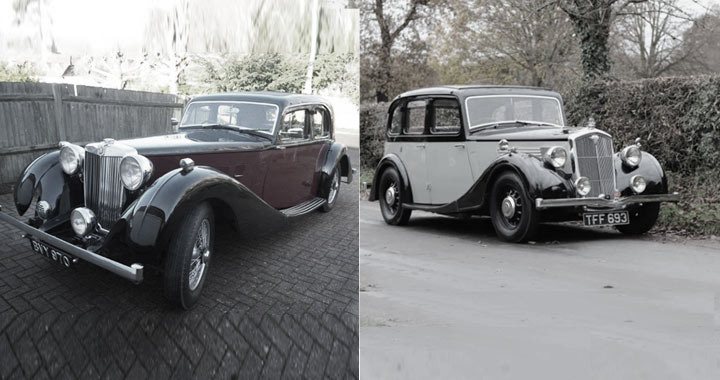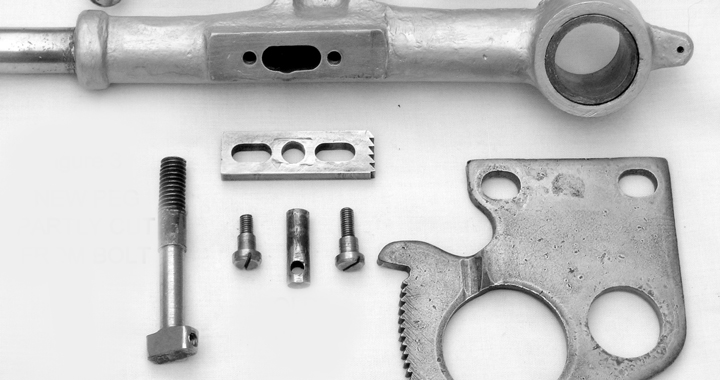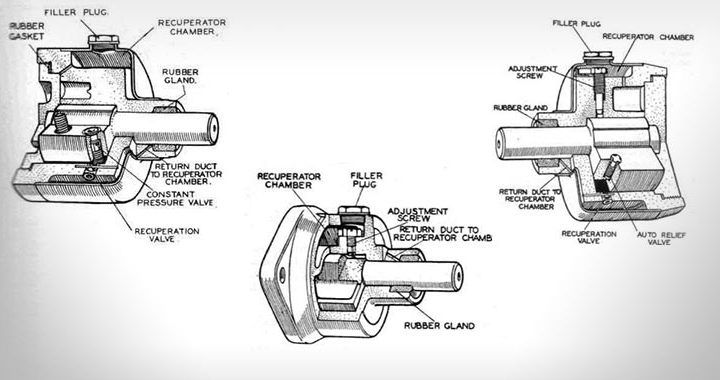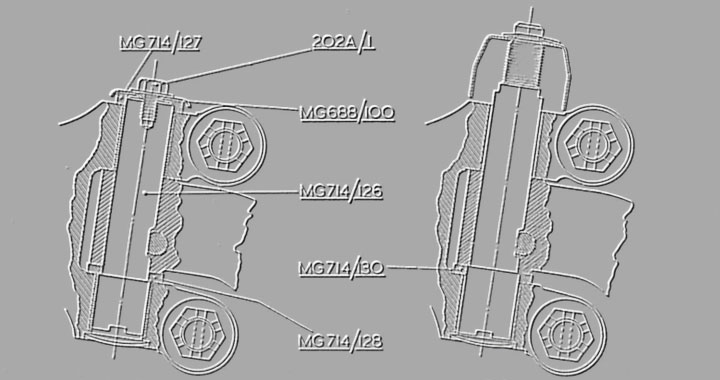by John Dutton
Most of us know that the QPHG engine used in the SA 6 cylinder cars had Wolseley origins, but maybe not so well known is that the models shared a virtually identical engine. The Wolseley 18/80 and 18/85 was a popular car with police forces, and continued to be produced after the war, in fact until 1948, under the name of the 18/85 Series III. Development continued over this period, and the post war cars had dry clutches and synchromesh on second gear, much like the WA.
Recently, the Register acquired several manuals and parts lists for the Wolseley range of cars. MG may have had the drop on Wolseley when it came to styling, but Wolseley were certainly much better than MG at producing manuals. Apart from the very different body style, the MG SA and the Wolseley 18/80 were virtually identical cars. The engines were almost the same, but so were the rest of the mechanicals-that is, the brakes, the transmission, the electrics, the carburation. The Wolseley wheels were smaller, and the body was much dumpier and shorter. The power plants were so similar, the challenge is actually to identify where they differed.
Specification
Both engines were exactly 2322 cc (the Wolseley did not reach the market until 1938, when the SA had finally standardised on this capacity). Bore in both cases was 69.5 mm, and the stroke, 102mm, the latter being shared with the whole family of SVW engines and dating back to the Morris Bullnose of the 1920’s. The early SA bore of 69mm was never used in the Wolseley.
The only specification differences between the MG and the Wolseley engines that I can find are the ignition and valve timing settings and the jet sizes.
In the MG ignition timing is a standard 7 degrees before TDC, and in the Wolseley it is zero degrees. We do know that the valve timing was different, the exhaust opening at 52 degrees before TDC in the 18/85 and 56 degrees in the MG, and the inlet valve closing at 57 degrees after TDC in the 18/85 and 59 degrees in the MG. Exhaust closing and inlet opening were the same at 24 degrees after TDC and 11 degrees before respectively. This implies a change to the camshaft but we do not have specifications to confirm this.
The standard jet in the 18/85 was CG, and in the MG, CH. Weak needles were CJ and CK respectively, and rich needles, HV3 and CL respectively. These were obviously mainly in the same series of sizes, and we know that the range of needles in the MG, from CL to CK had small differences, so the Wolseley CG and CJ must also have been very similar. The compression ratio in both cases was 6.5:1, and both cars used twin SU 1 ¼” carburettors, though the Wolseley cars used an electric choke rather than a manual choke. If the compression was the same, it seems very likely that the cylinder head thickness was also the same, and that the combustion space in the head was machined the same.
Power Output
Commentators have remarked upon the many changes made to the SA engine through its short life, claiming that competition from Jaguar caused MG continually to look for more power. They seem not to take account of the fact that the engine was also under development for Wolseley. MG may have had no say in the matter.
The 18/85 of the post war Wolseley had an 85 bhp engine, whereas the pre-war SA engine is often quoted as being 75-80 bhp. The second half of the Wolseley nomenclature refers to the bhp, and the pre-war Wolseley was called the 18/80, so it seems likely that the pre war engines had an 80 bhp engine. In fact, it is not clear what Wolseley did to get the extra 5 bhp after the war, since none of the key dimensions were altered. Strangely, we have a specification sheet for the 18/85 that quotes 70 bhp and another dated one month earlier that quotes 85 bhp. It seems very likely that the bhp was being measured at two different places, probably at the fly wheel and the rear wheels. This confusion makes it difficult to tell which was the more powerful engine. My guess is that the MG output of 75-80 bhp was comparable to the 70 bhp quoted for the 18/85, both being measured at the rear wheels.
An often-underestimated influence of the time was also the RAC and Treasury horsepower rating which was actually based on engine capacity rather than engine output. The formula was odd: h.p. = (D2 x n)/2.5 where D = the diameter of the cylinder in inches [1″ = 25.4mm], and n = the number of cylinders. This was the main culprit behind the UK bias towards narrow bore/long stroke engines. It would look to be likely that Nuffield were trying to get the maximum horsepower from the engine without exceeding the Treasury (RAC) rating of 18 HP, as anything higher would have affected the tax payable. The later SA and Wolseley engines were almost exactly 18 HP in rating (in fact 17.97) and this would presumably mean that the Jaguar owner paid more tax. Certainly, the SA feels as if it can use more power, which maybe why the WA was introduced at 2.6 litres, but the SA continued in production for the buyer wanting the lower tax rating.
Leaded fuel was introduced in 1944, half way through the life of this engine. At first, there seems to have been concern at Wolseley that the new fuel would increase valve seat wear, but presumably experience soon showed the opposite to be the case. What the new fuel would have provided was higher octane, and this eventually led to higher compression and power output. But the compression did not change from a low 6.5 throughout the twelve-year life of the engine. Owners today say that the cylinder head will tolerate quite heavy skimming, bringing the compression ratio up to well over 7.0:1. Neither MG nor Wolseley engineers seem to have followed this route. This is odd, given the limitations of the HP rating system, and the simplicity of the route of skimming the head. A probable reason is that the engines shared parts, especially rockers, valves and push rods, with other engines in the Nuffield family.
Comparing Illustrations
I have compared illustrations in the Wolseley manuals with those in the MG Parts manuals. The numbers in the illustrations cross-reference to the parts numbers in the main body of the Wolseley parts manual. From this, we can identify the Wolseley part number against the MG equivalent, though it is a somewhat laborious process. There are no obvious similarities in the coding, it is clear that each company had its own system. Ironically, many of the Wolseley part codes are prefixed “SA”, but this looks to be pure coincidence. The most obvious differences are in the engine mount plate, probably because of the different chassis; and the manifolds. The latter are slightly inclined on the 18/85, although the carbs. are horizontal as in the SA. The Wolseley exhaust manifold is a one piece casting, and the down pipe to which it is joined is siamesed immediately below the manifold. In the SA there are two exhaust manifolds and the downpipe is not siamesed until it runs under the body. So the major differences between the two engines are probably the breathing arrangements and the camshaft. The cylinder heads are not interchangeable because of the inclined ports on the 18/85, but it looks as if all other parts were identical.
The “G” in QPHG, the code for the MG engine, stands for MG, and the code for an equivalent 18/85 would therefore have been QPHW, but we cannot find this nomenclature anywhere in the Wolseley literature.




